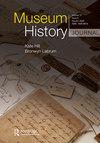Formafantasma: Cambio
IF 0.2
Q3 HISTORY
引用次数: 0
Abstract
The warmest and wettest regions tend to host the highest structural complexity and biological diversity. The Amazonian forests in South America are home to 16,000 described and undescribed tree species alone and to communities that speak over 300 different languages. Moving towards the poles, biodiversity decreases in line with the average temperature, while the ratio of land covered by forests increases: the boreal forest that covers 33% of the total forested area is thus the largest biome on the planet.Formafantasma:汇率
最温暖和最潮湿的地区往往具有最高的结构复杂性和生物多样性。仅南美洲的亚马逊森林就有16000种已描述和未描述的树种,还有讲300多种不同语言的社区。向两极移动,生物多样性随着平均温度的下降而下降,而森林覆盖的土地比例则增加:因此,覆盖总森林面积33%的北方森林是地球上最大的生物群落。
本文章由计算机程序翻译,如有差异,请以英文原文为准。
求助全文
约1分钟内获得全文
求助全文

 求助内容:
求助内容: 应助结果提醒方式:
应助结果提醒方式:


